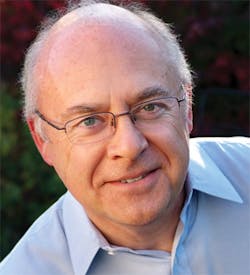
One half-century after the laser was first demonstrated it's difficult to briefly summarize the profound impact that lasers and photonics now have on our daily lives. But just how reliant on photonics we've actually become was acutely evident last year to more than 50,000 consumers when vandals severed fiberoptic cables in Silicon Valley. All landlines and cell phones together with Internet communications were impacted. Schools were closed and operations were essentially frozen at hospitals, stores, and banks because computerized medical records, automated tellers, and credit and debit cards all ceased to function—as did the emergency 911 system.
It's taken only 50 years for photonics to become as essential to our way of life as electronics and electricity. And for most of that time, Laser Focus World has chronicled the breakthroughs and advances as they occurred. This month you can follow the laser's development trail throughout the pages of the May issue with our commemorative timeline—starting on page 2—that depicts many key developments as they unfolded from the late 1950s up until today. Emission wavelength is one facet of those developments: Early lasers offered few wavelength options but today's users can access practically any wavelength they need—an aspect of the laser's evolution that contributing editor Jeff Hecht explores in this month's "Photonic Frontiers" feature on page 34.
But while we reflect on the laser's history, let's not forget about its future. The past 50 years have laid substantial groundwork for an explosion of photonics technologies that will result, I suspect, in capabilities and applications that are today as unimaginable as the laser's impact was even at its birth. And with the wealth of related photonics technologies, such as optical molecular imaging (see page 61), adaptive optics (see page 66), photonic crystal fibers (see page 41) and more, we're actually just beginning a new era: Welcome to the next 50 years of lasers and photonics.
About the Author
Stephen G. Anderson
Director, Industry Development - SPIE
Stephen Anderson is a photonics industry expert with an international background and has been actively involved with lasers and photonics for more than 30 years. As Director, Industry Development at SPIE – The international society for optics and photonics – he is responsible for tracking the photonics industry markets and technology to help define long-term strategy, while also facilitating development of SPIE’s industry activities. Before joining SPIE, Anderson was Associate Publisher and Editor in Chief of Laser Focus World and chaired the Lasers & Photonics Marketplace Seminar. Anderson also co-founded the BioOptics World brand. Anderson holds a chemistry degree from the University of York and an Executive MBA from Golden Gate University.